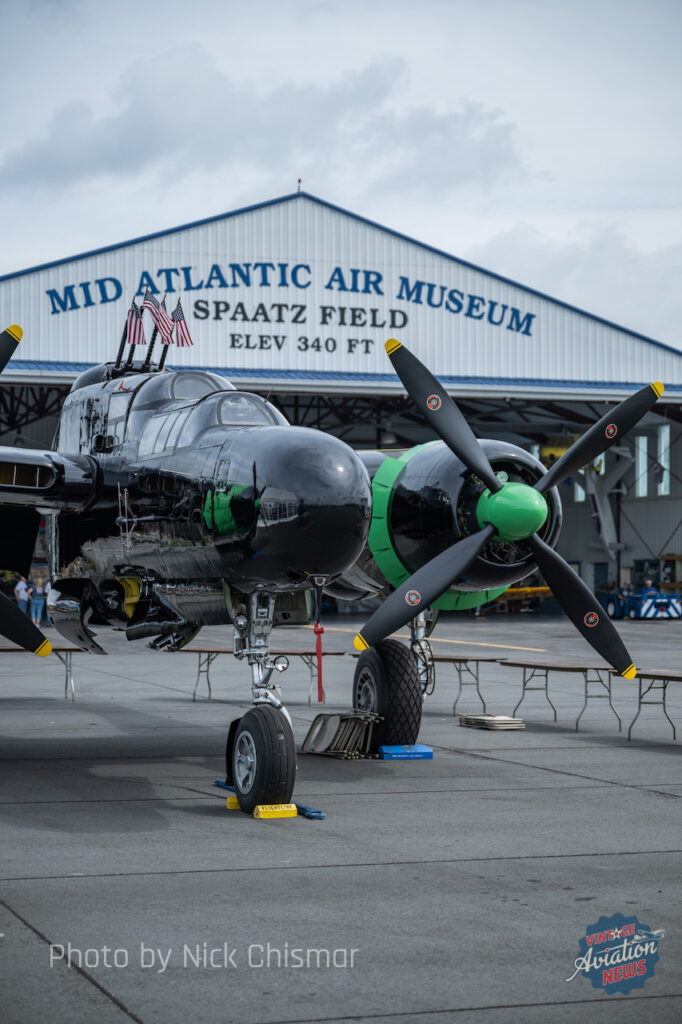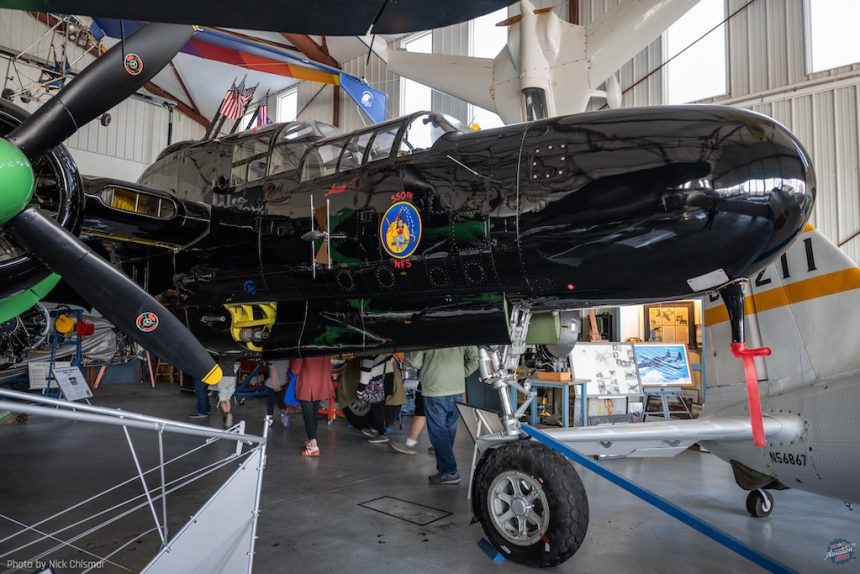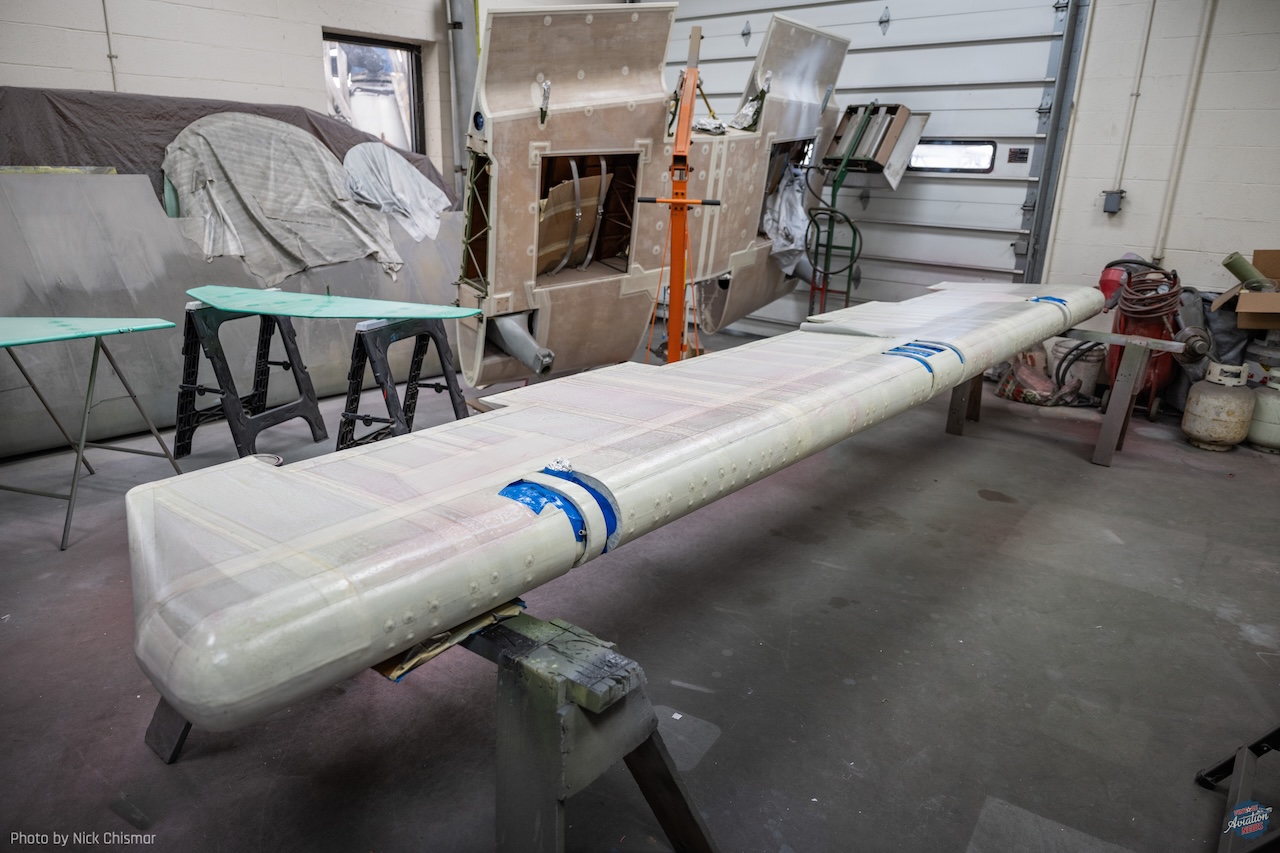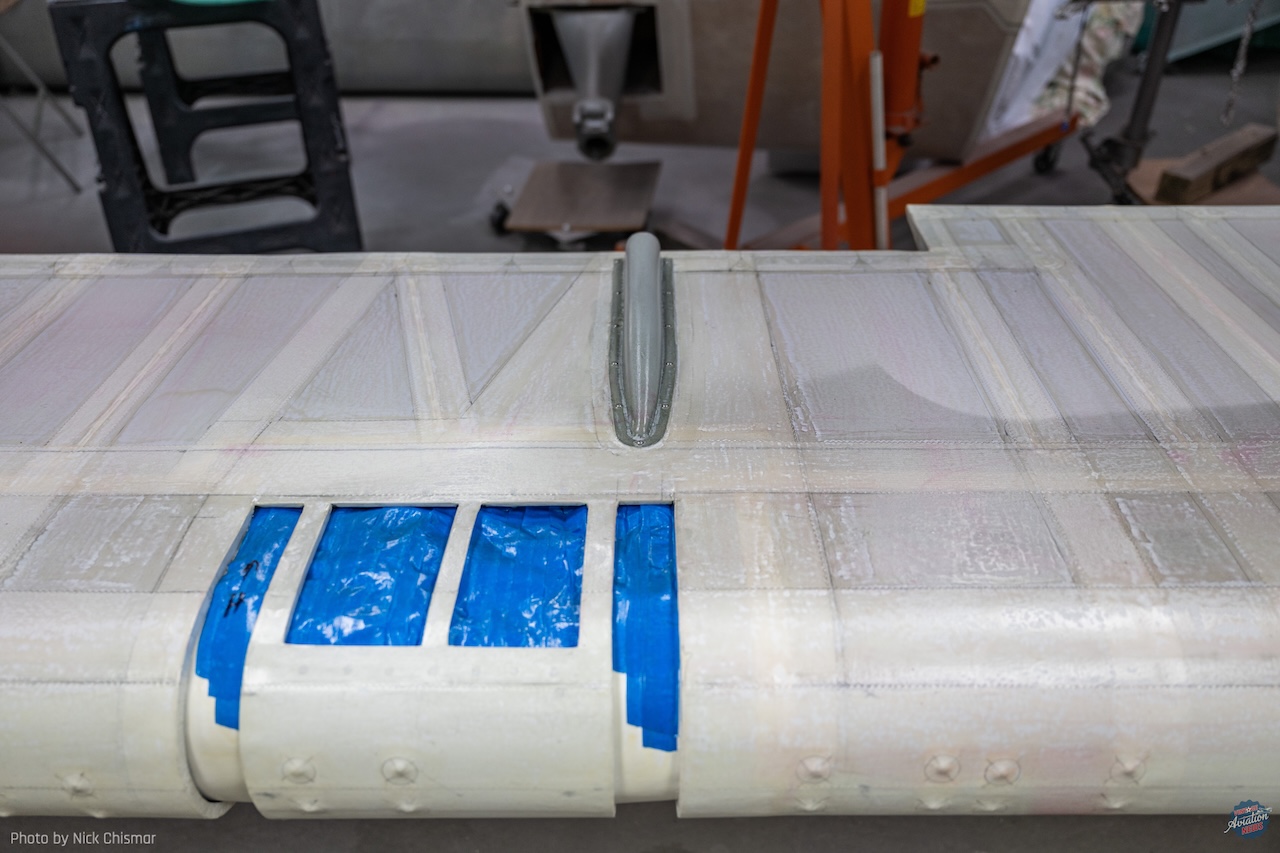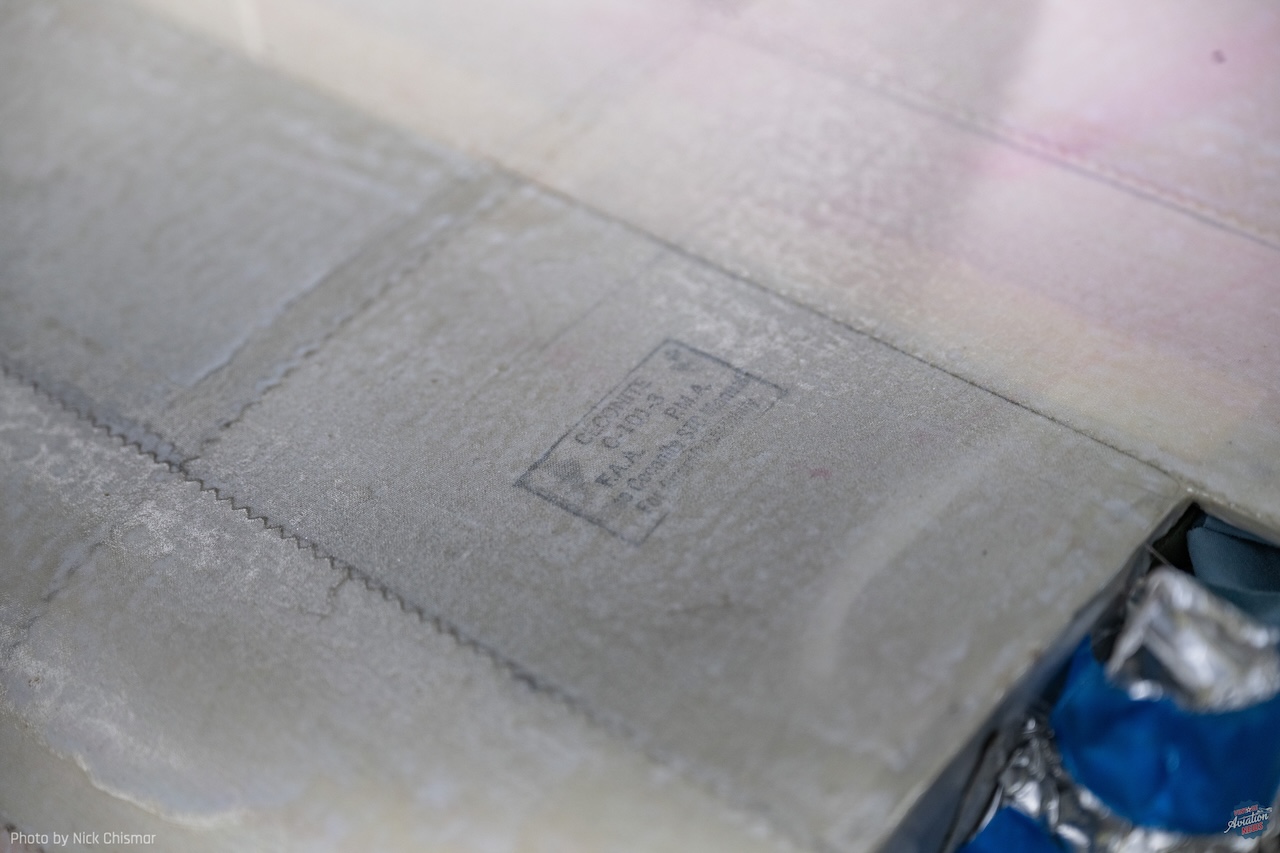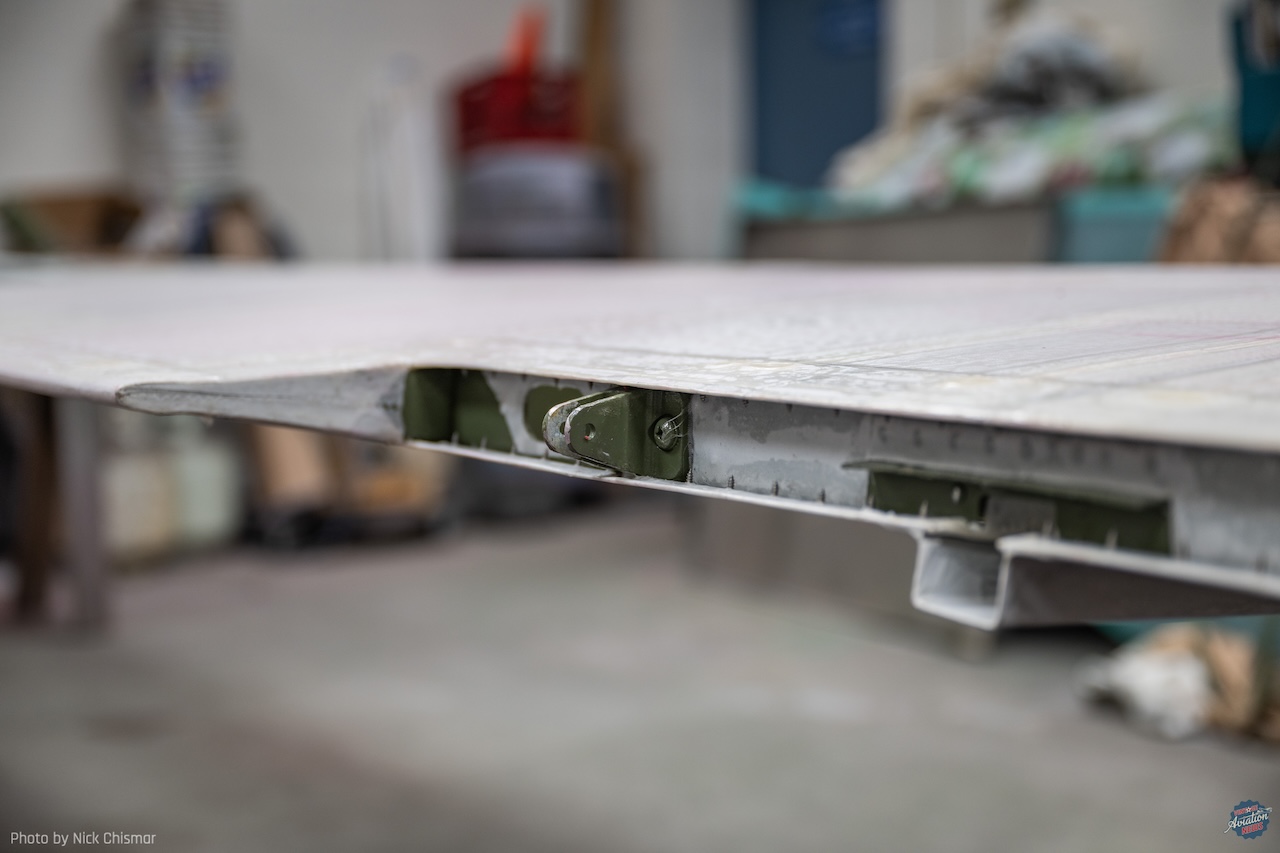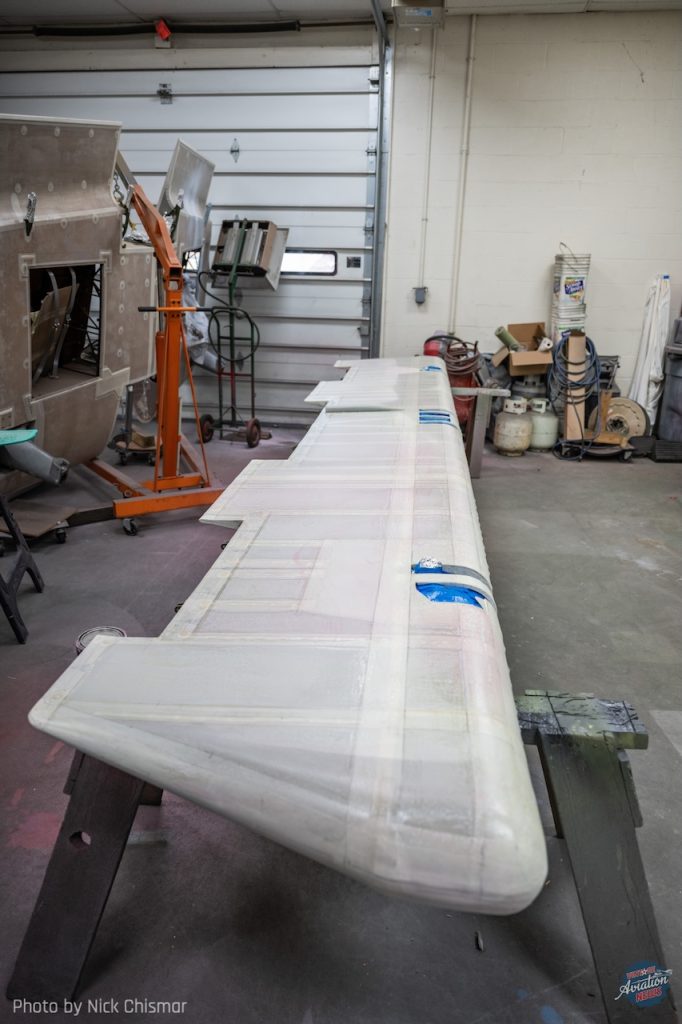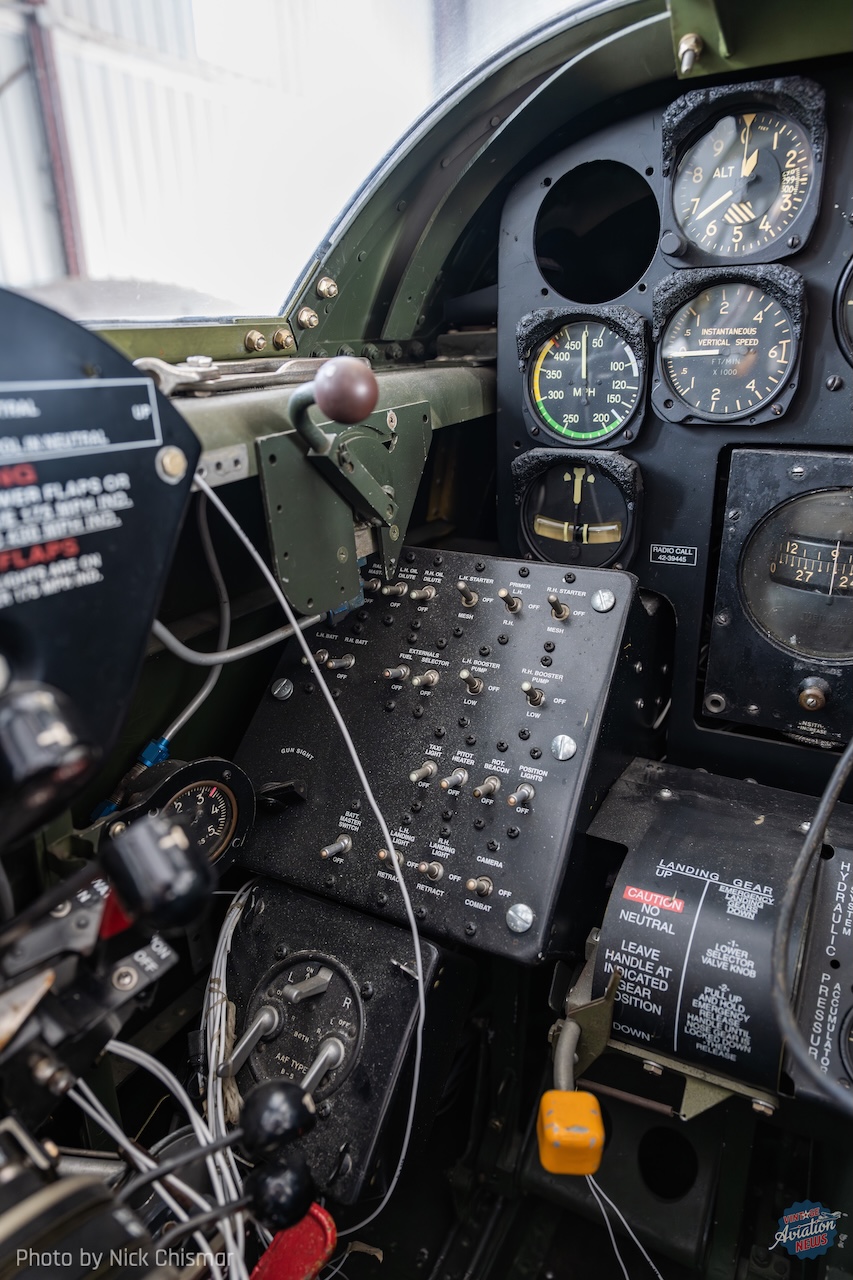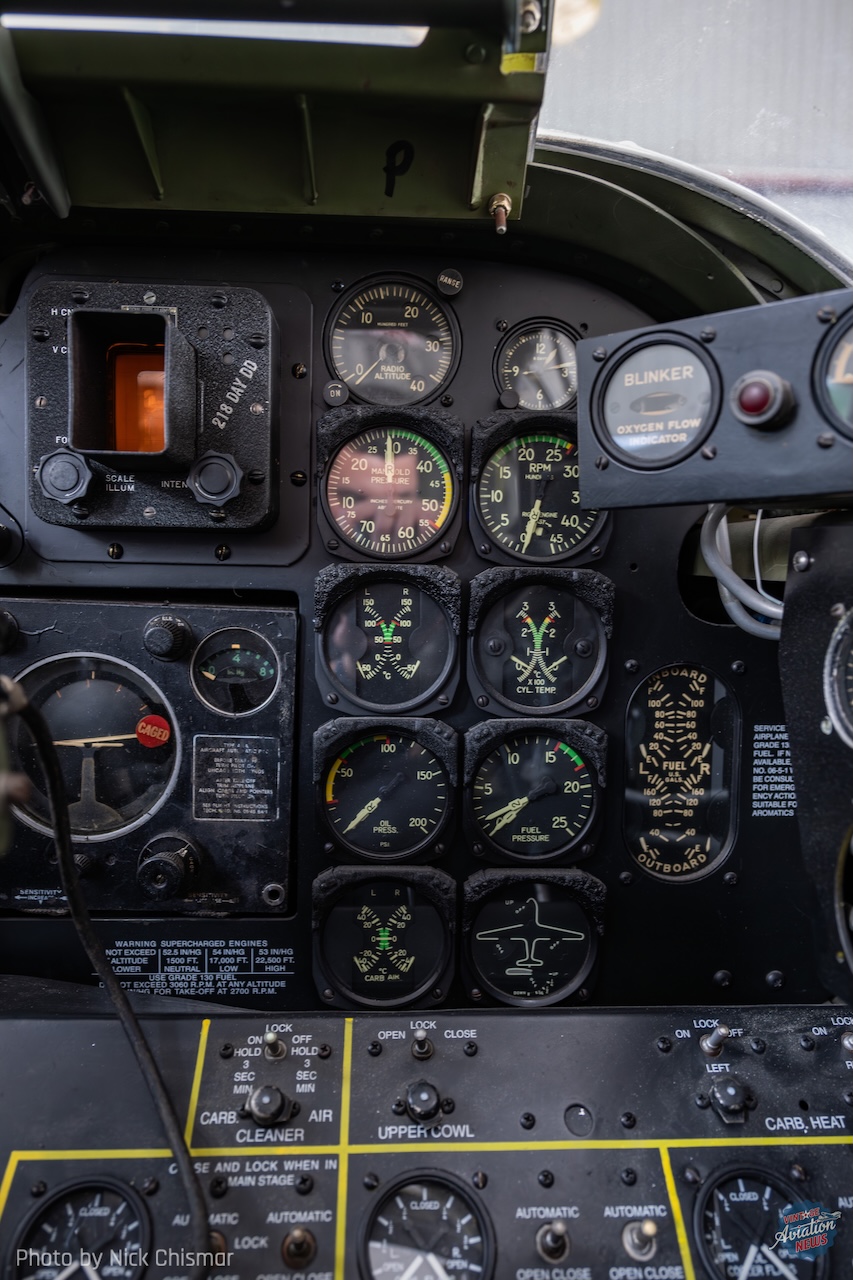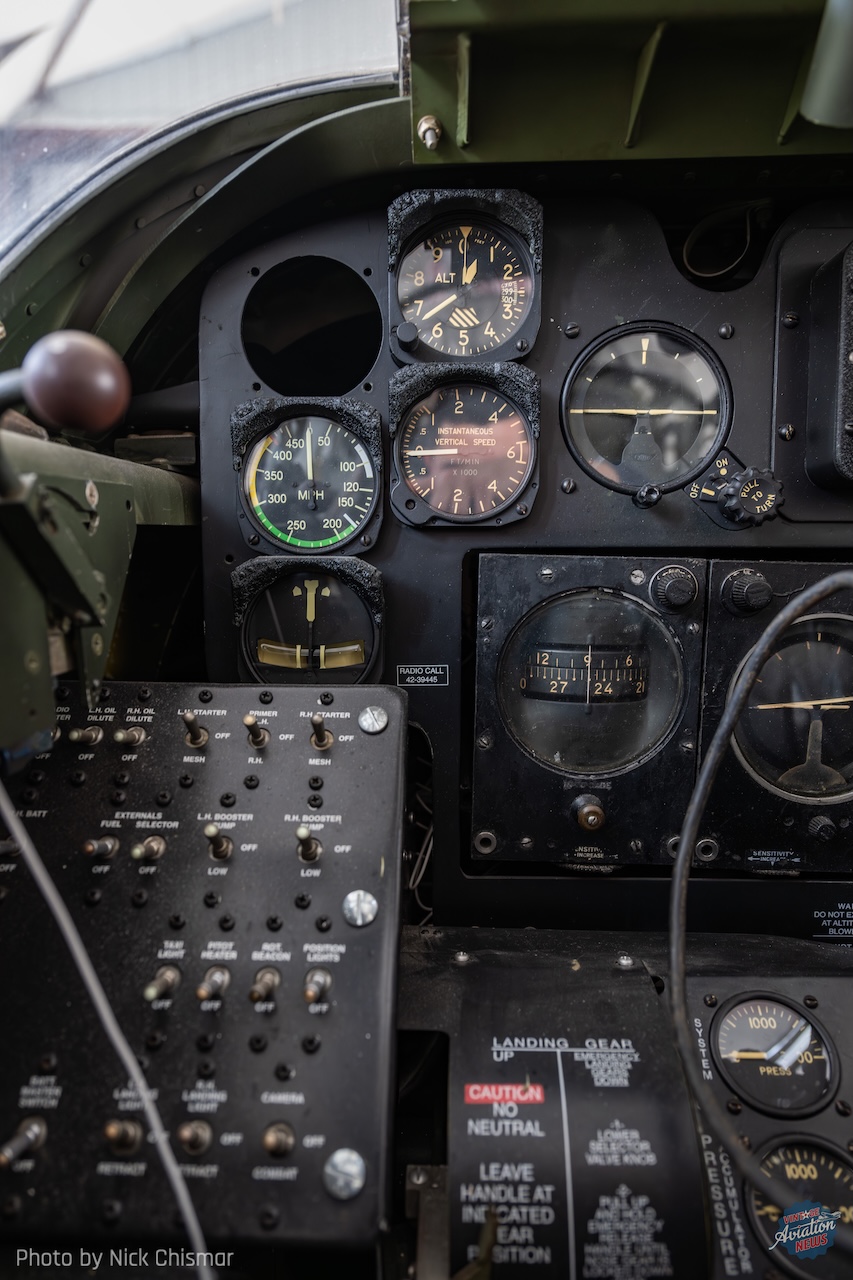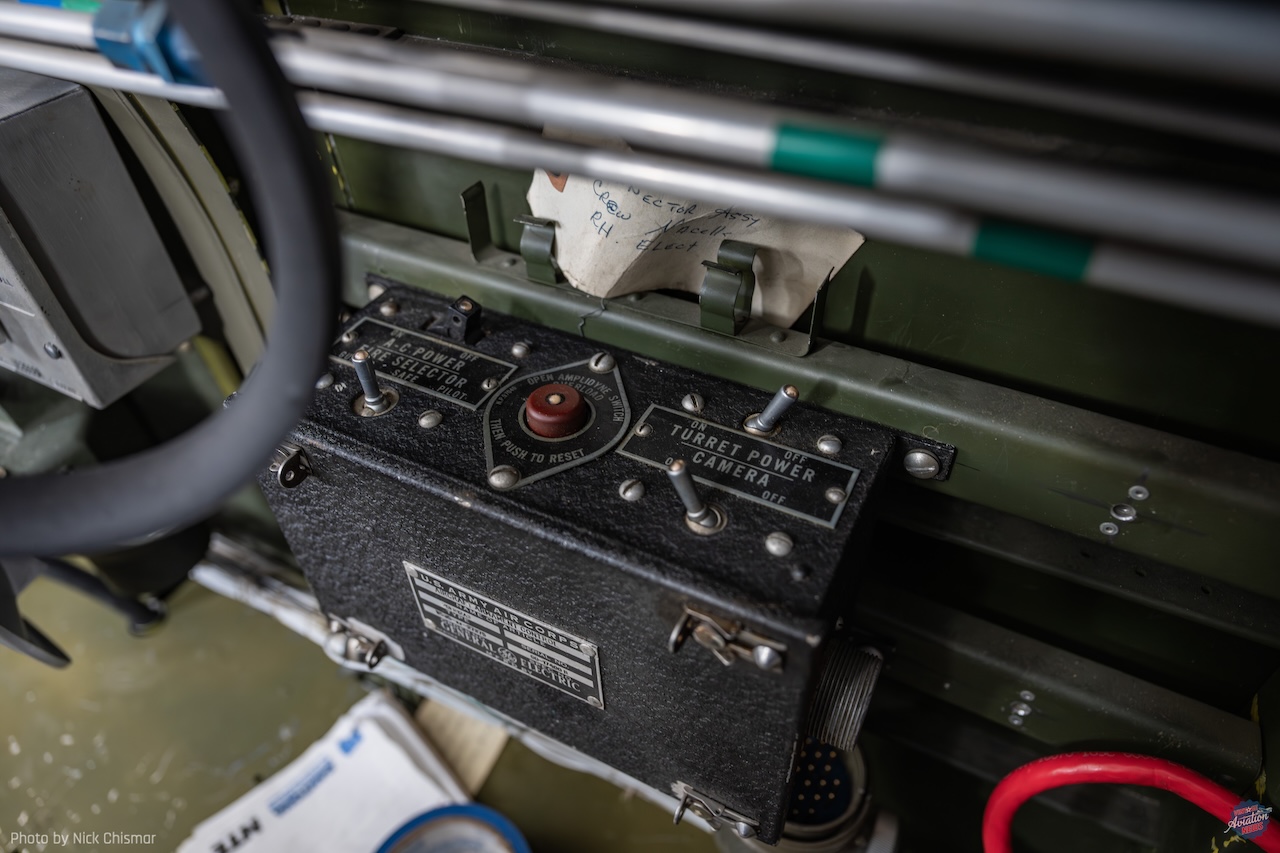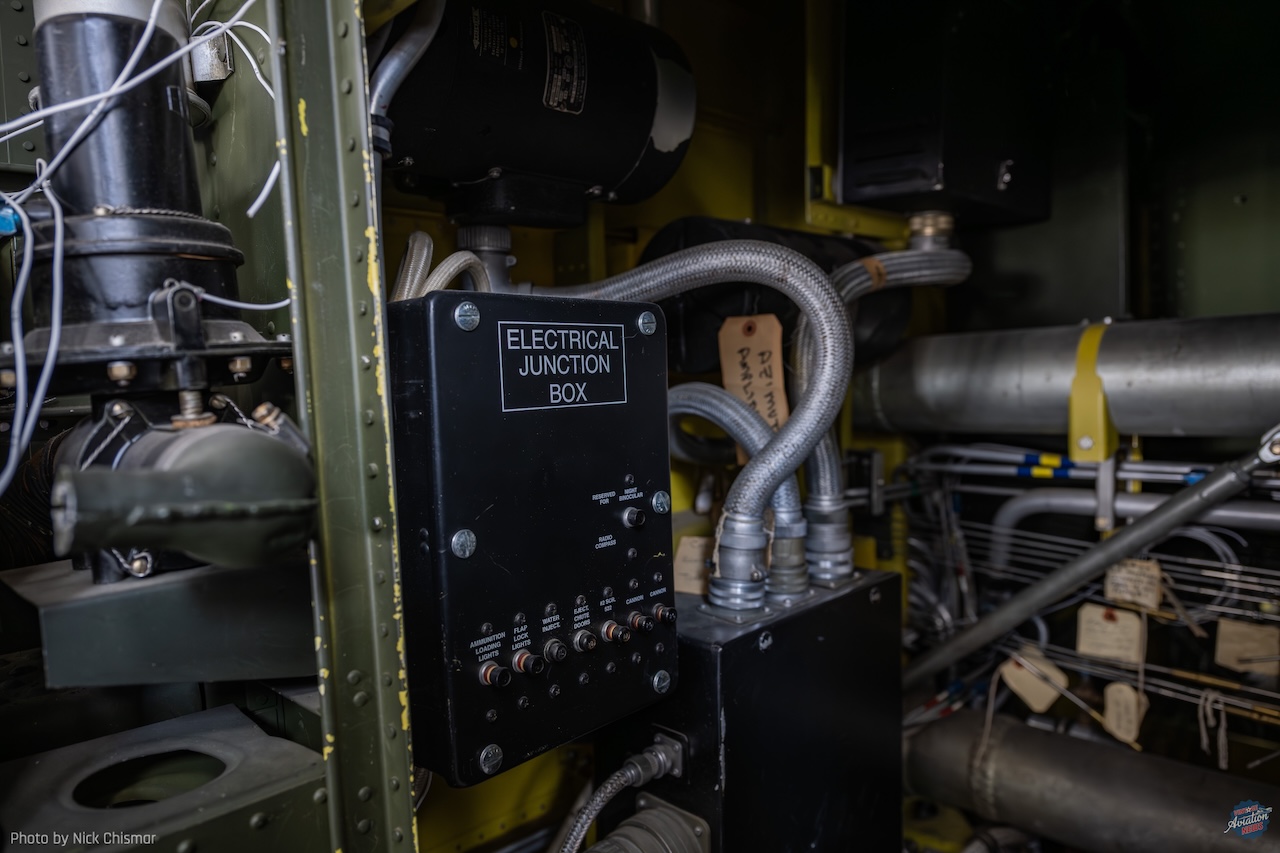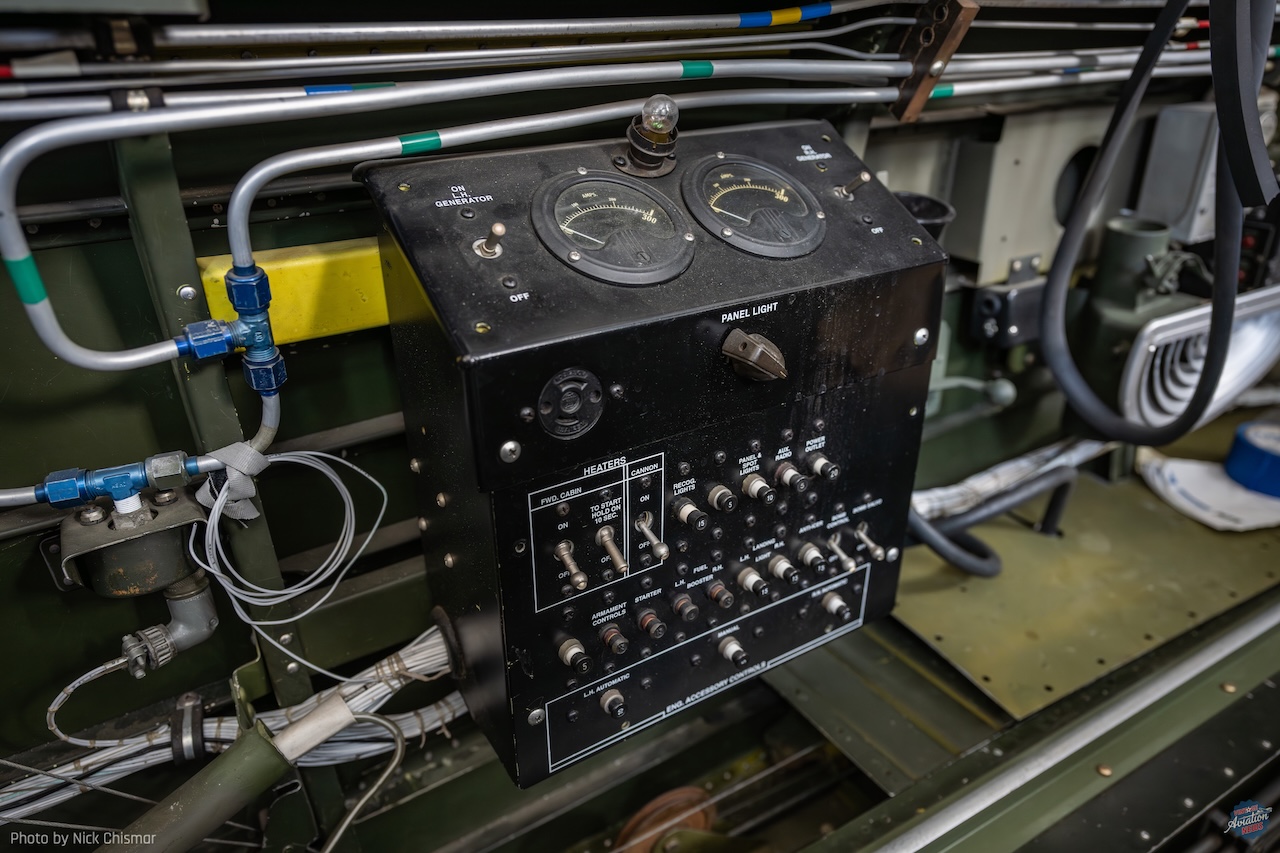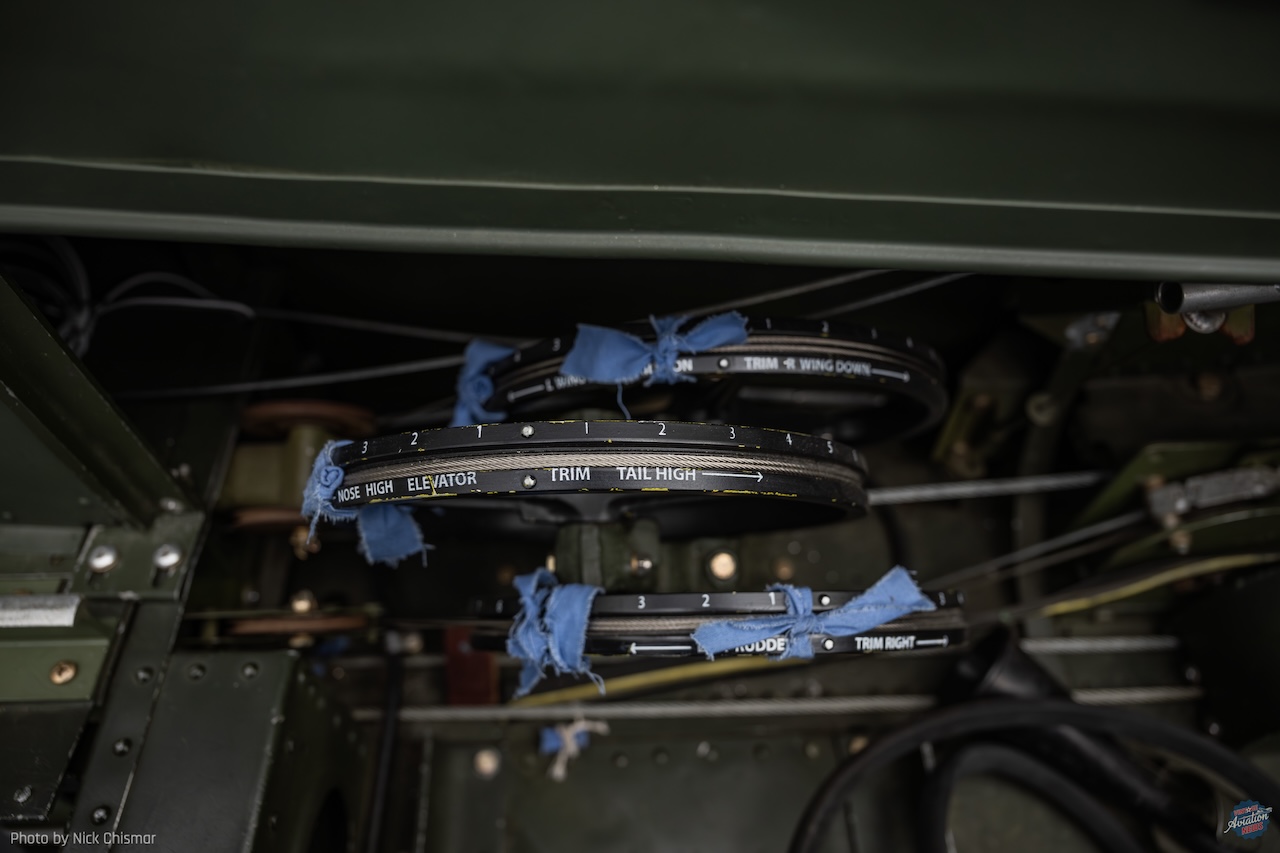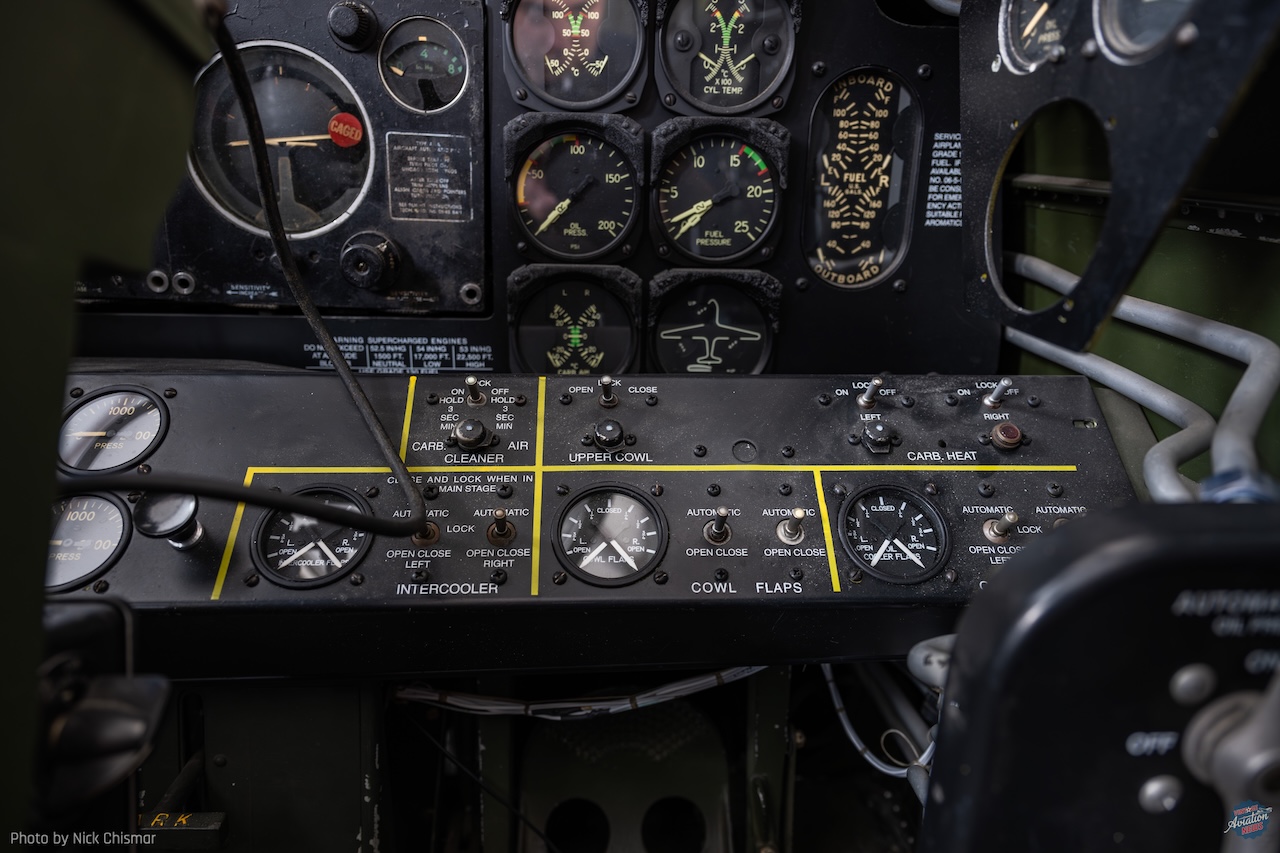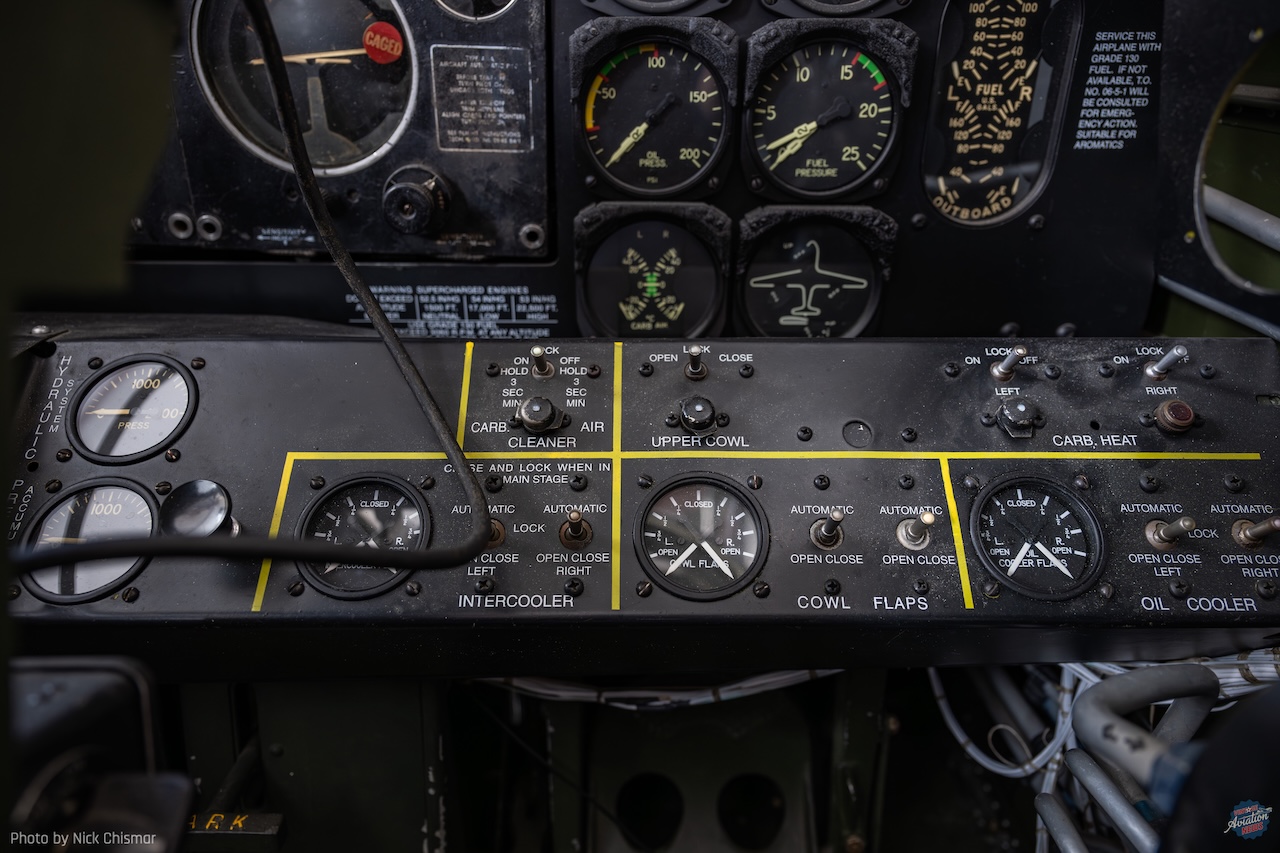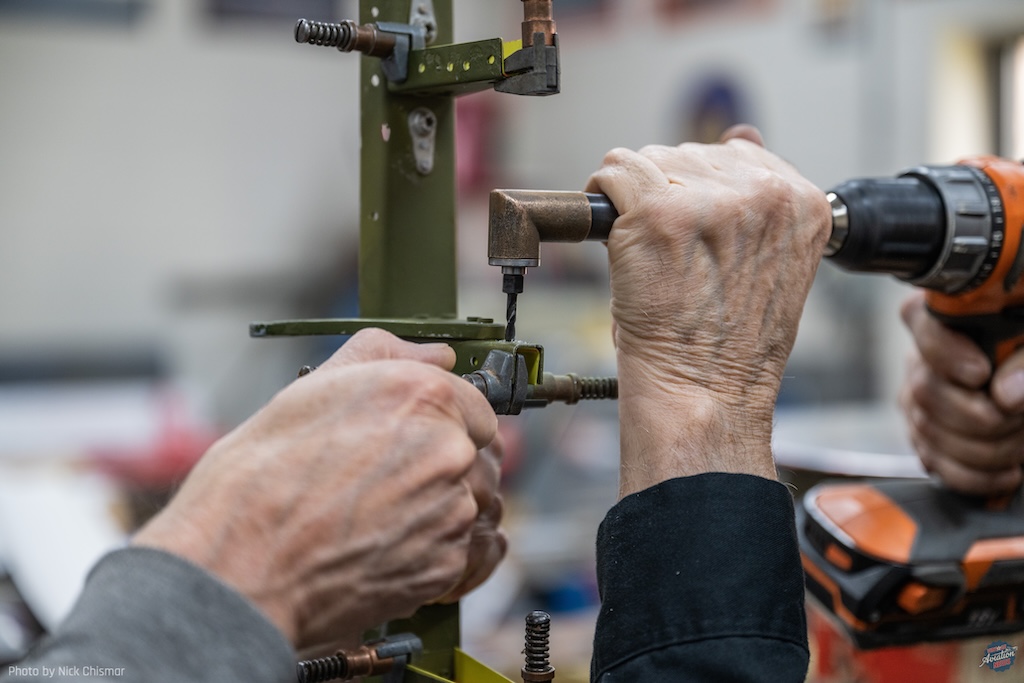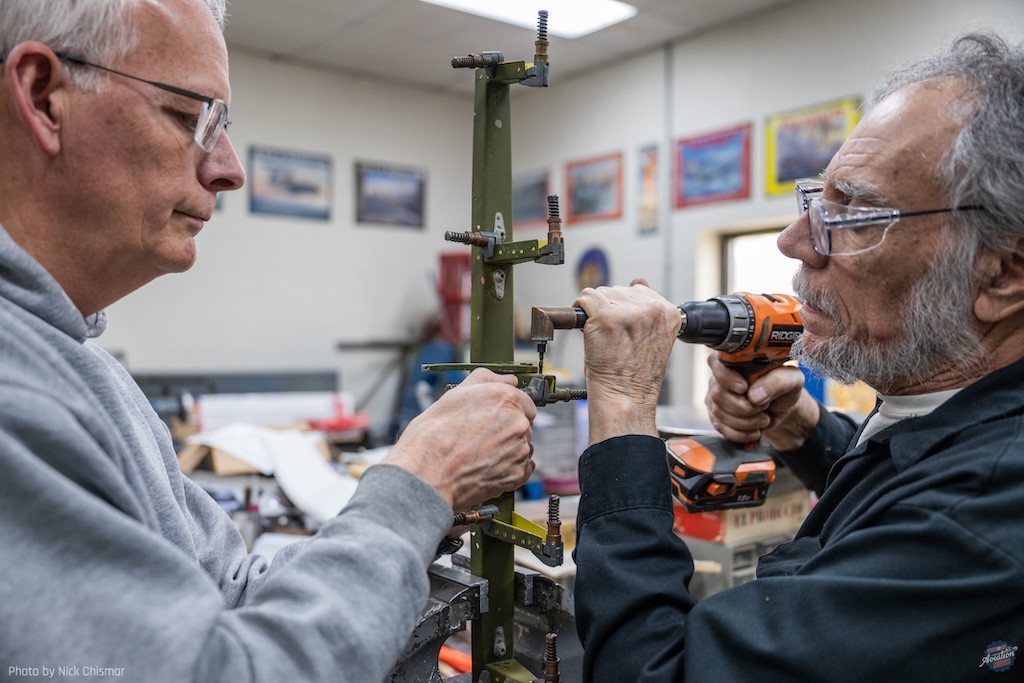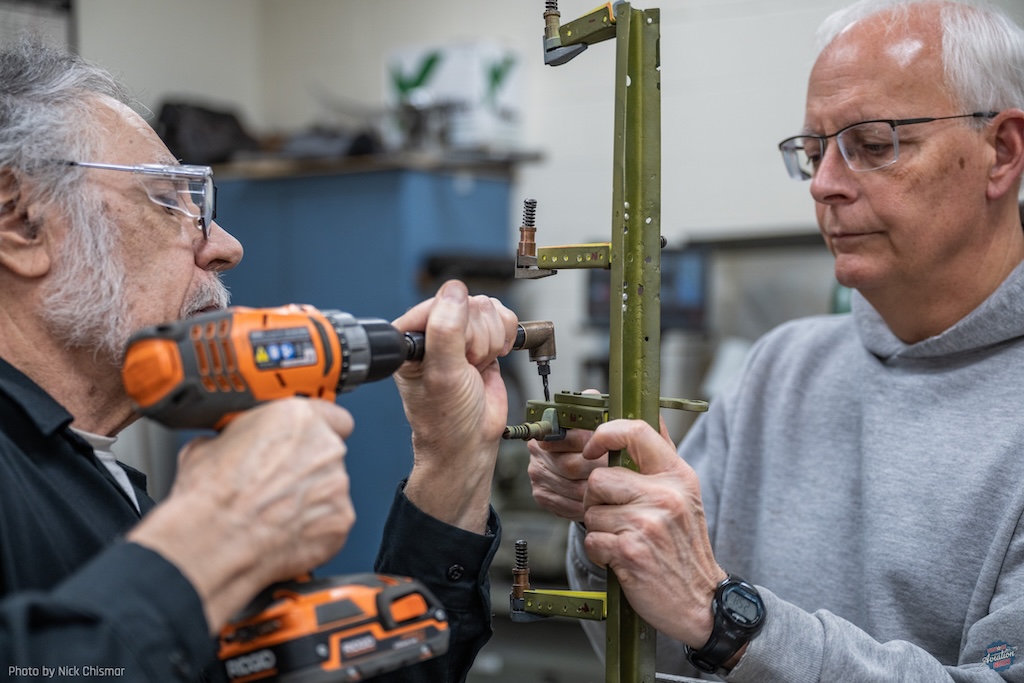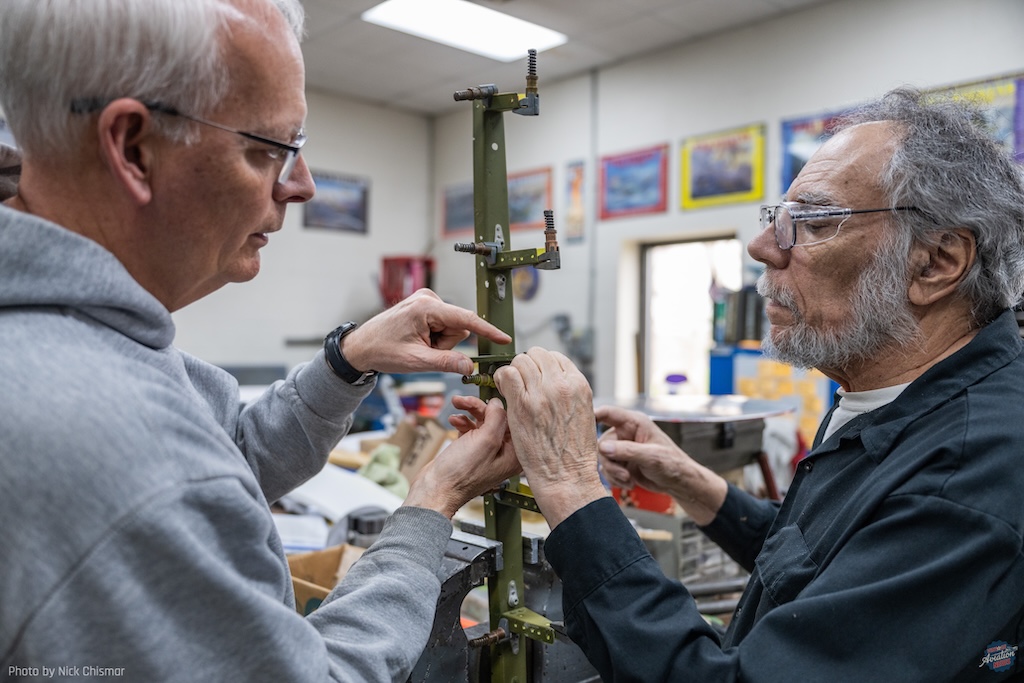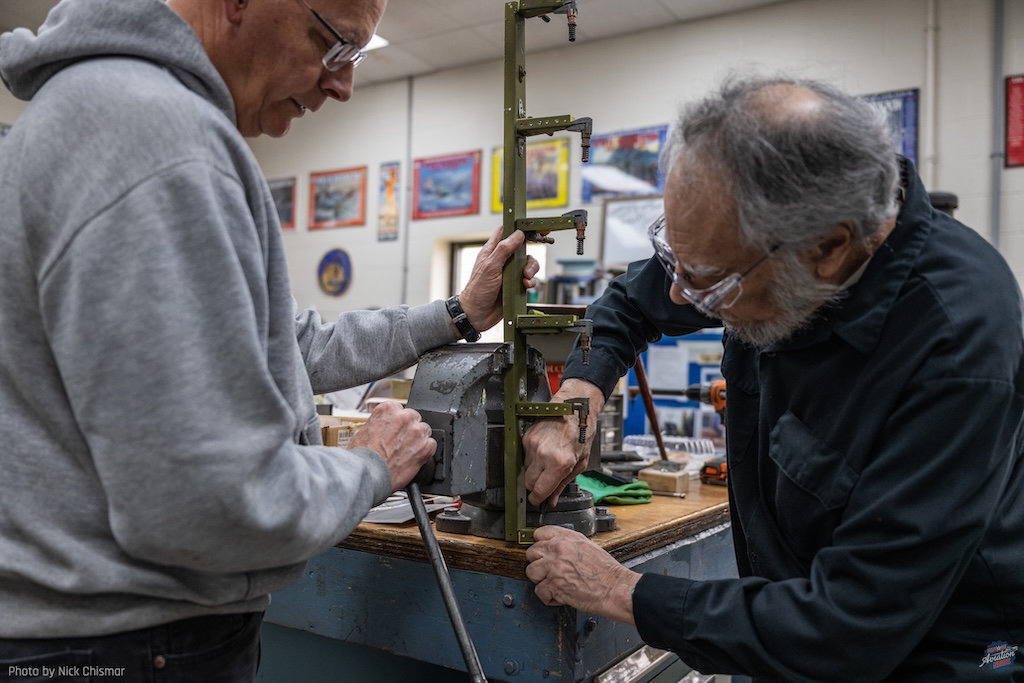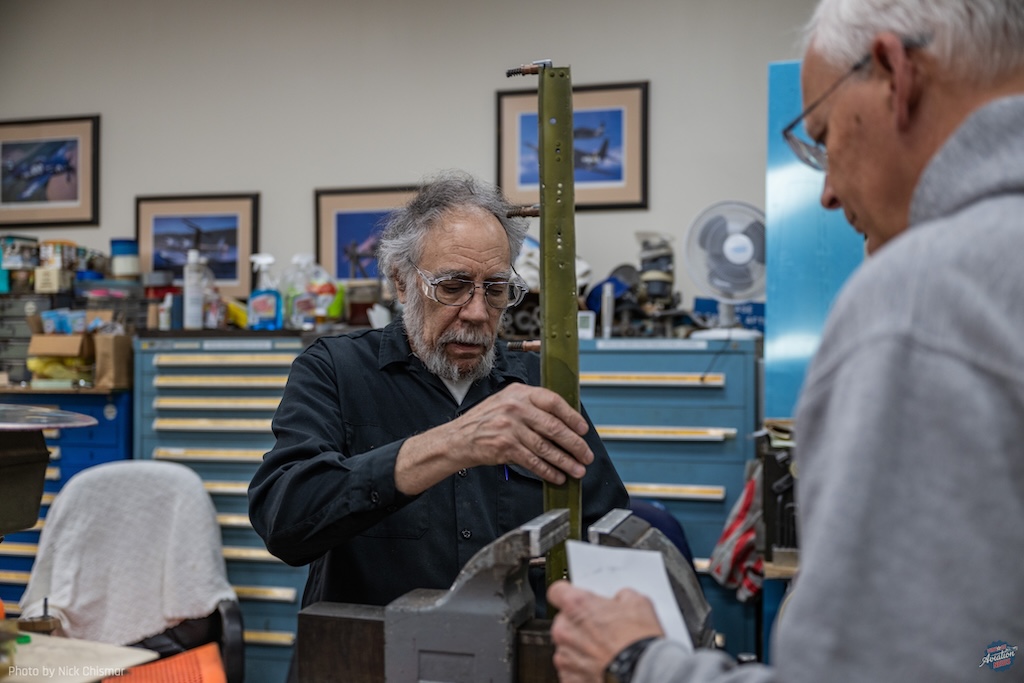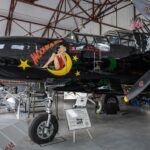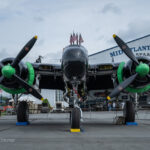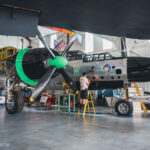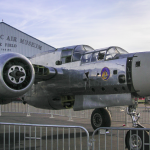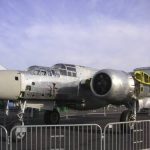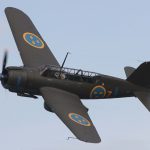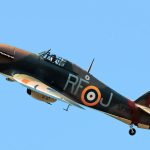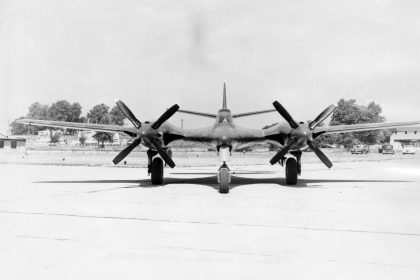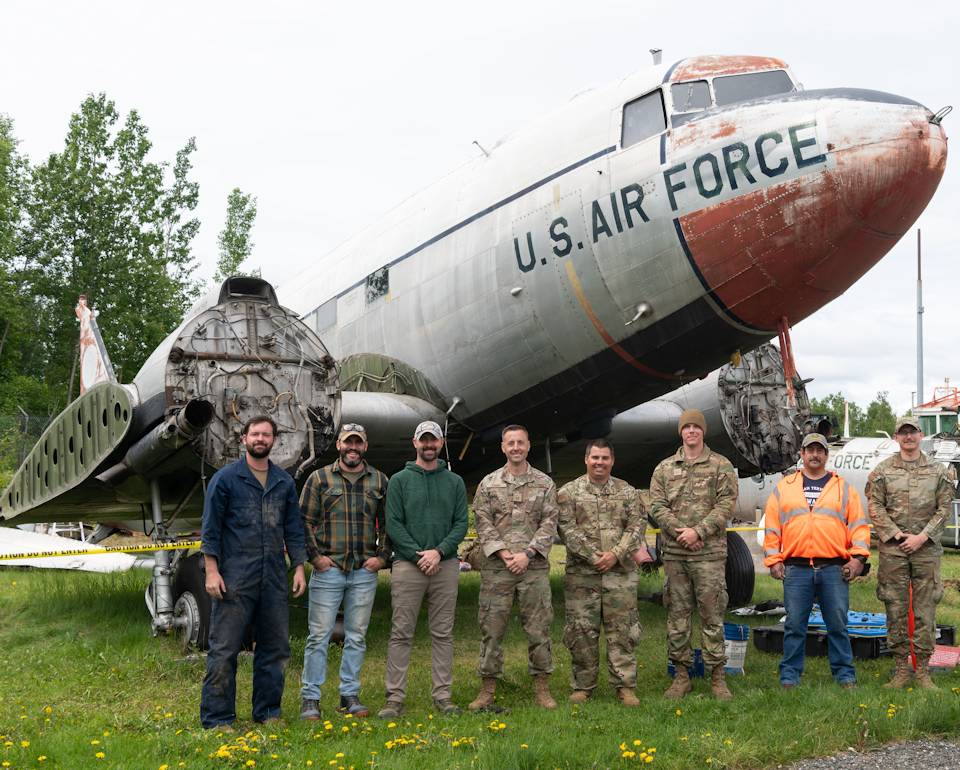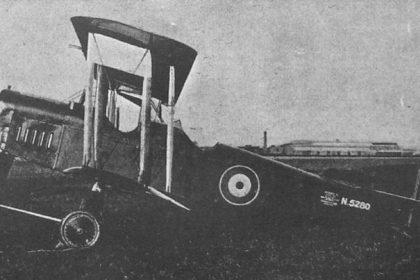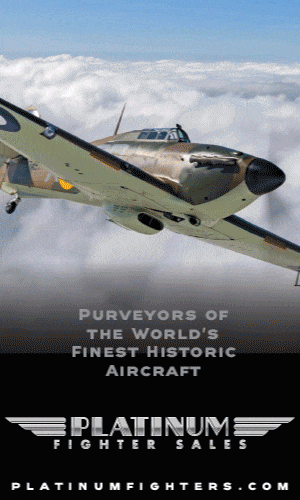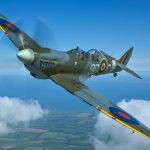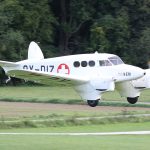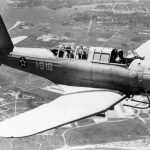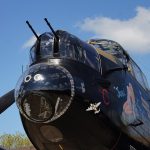Following the milestones reached in 2024—when the aircraft was fully painted and received its distinctive Moonbeam Dream nose art—the Mid-Atlantic Air Museum’s P-61 Black Widow ( s/n 42-39445) restoration continues to advance with remarkable momentum. As detailed in our previous update, the restoration reached a visually transformative stage last summer. Since then, the museum’s dedicated team of volunteers has been hard at work tackling increasingly complex systems and structures in pursuit of returning this rare warbird to the skies. Contributor Nick Chismar recently had the opportunity to visit the museum and speak with President Russ Strine, who offered an in-depth look at the work completed over the past year and what lies ahead.
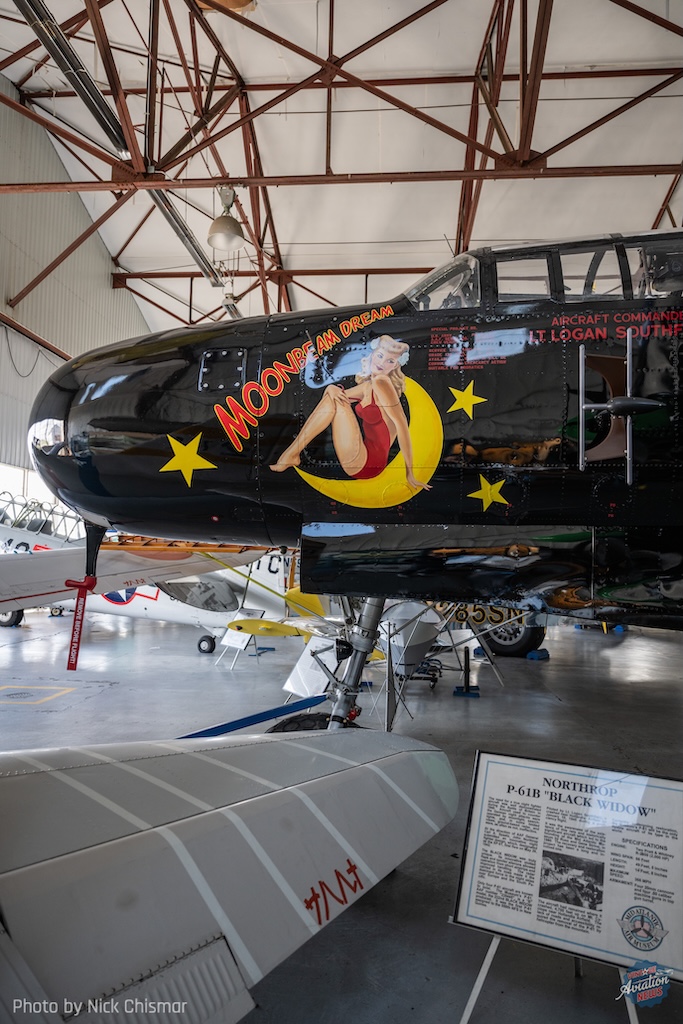
Finishing Touches: Cowlings and Control Surfaces
Much of the recent work has focused on the P-61’s accessory cowlings and control surfaces. The cowlings have now been mounted to the aircraft, enclosing the engines and offering a cleaner, more finished look in anticipation of this year’s WWII Weekend. While the cowlings were not yet painted at the time of my visit, Russ expressed hope that they would be painted in time for the event.
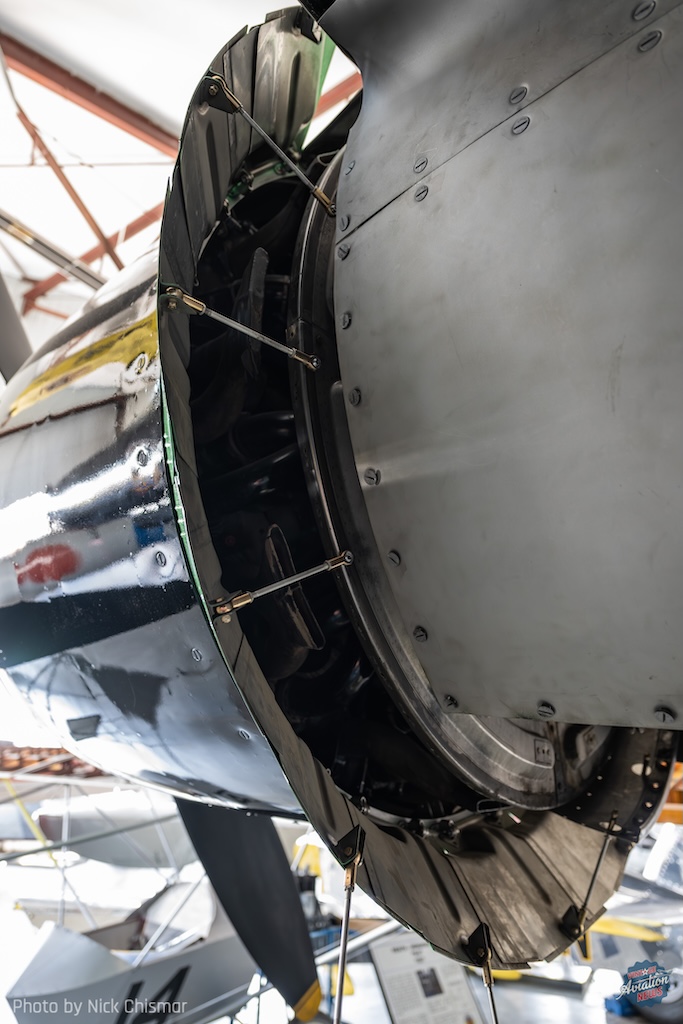
One of the largest remaining components, the aircraft’s horizontal stabilizer, is currently undergoing a meticulous finishing process in the museum’s paint shop. Fabric-covered and treated with layers of Butyrate aircraft dope, the stabilizer will receive a protective silver dope coat followed by its final black paint. If all goes according to plan, the stabilizer may be installed ahead of WWII Weekend in June.
Rudder Work and Component Fabrication
Progress has also been made on the aircraft’s rudders. The number one (left) rudder is nearly complete. “We’ve had it hanging on the airplane already and we’ve taken it off. It’s not finished yet, and I’m not sure that it will be finished for WWII Weekend, but we’re going to give it a good try,” Russ shared.
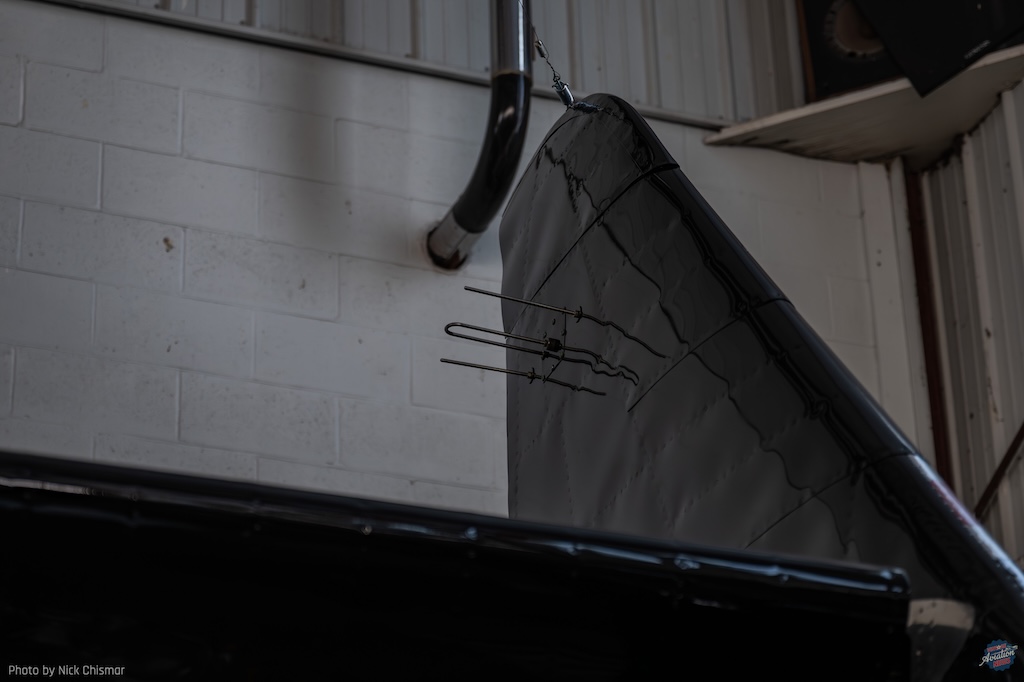
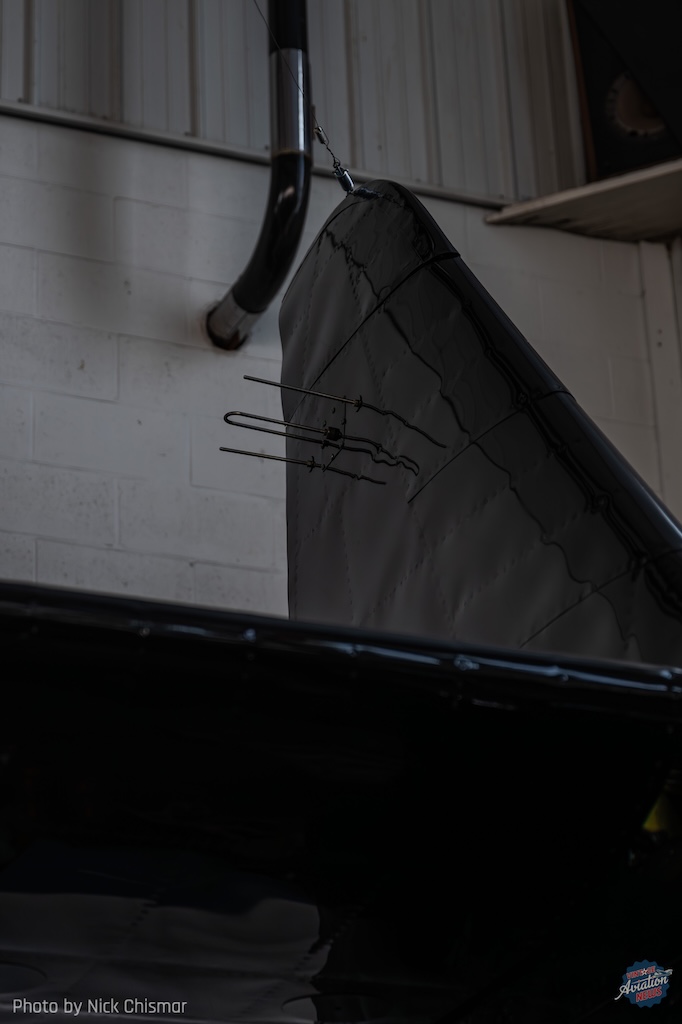
A Search for Shackles and Drop Tank Fairings
In an effort to restore historically accurate capabilities, the museum has launched a new parts search. Due to the P-61’s limited internal fuel capacity, many aircraft were equipped with drop tanks for extended missions. The required shackles and fairings—originally Lockheed parts (Lockheed #196061 Left and 196061-1 Right / Northrop 520051 Left and 520051-1 Right)—were shared with aircraft such as the P-38, PV-1, and PV-2. While the museum already possesses a pair of drop tanks, they would prefer to locate original shackles rather than fabricate replacements.
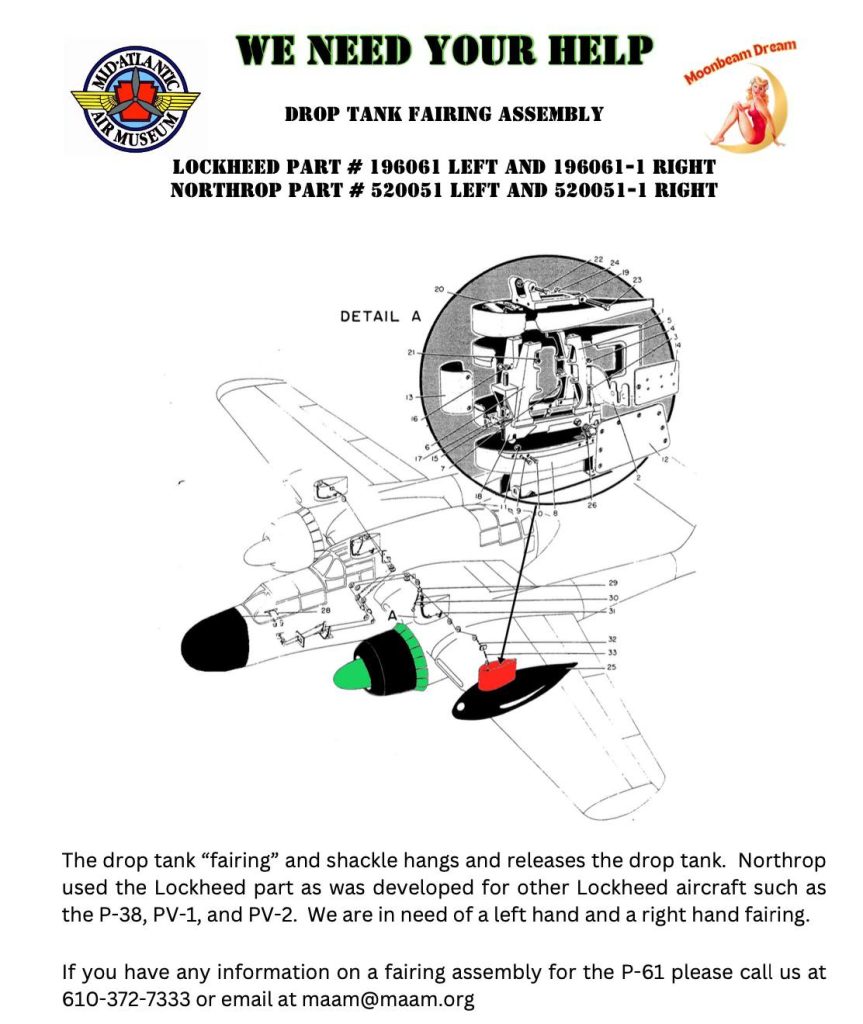
One Rare Tire Secured
One long-running quest has finally reached a successful conclusion: the acquisition of a suitable nose wheel tire. Previously believed to be identical to those on the Lockheed Constellation, the correct tire was ultimately traced to the main gear of the Beechcraft AT-11. Fortunately, Russ located one already mounted on a wheel and was able to acquire it. With the tire now installed, yet another hurdle to future flight has been cleared.
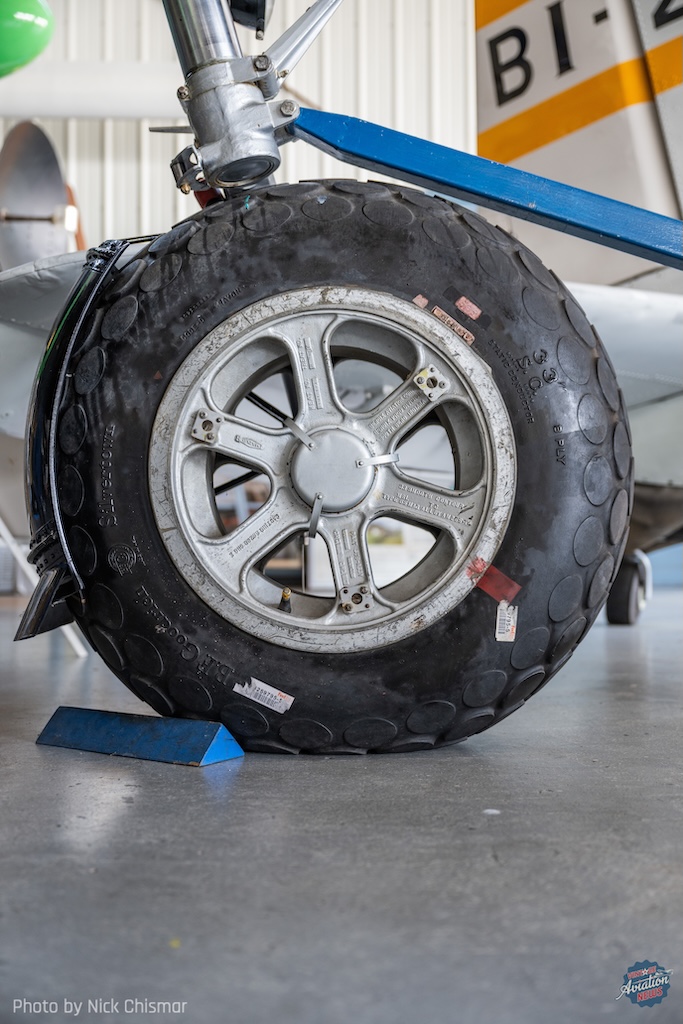
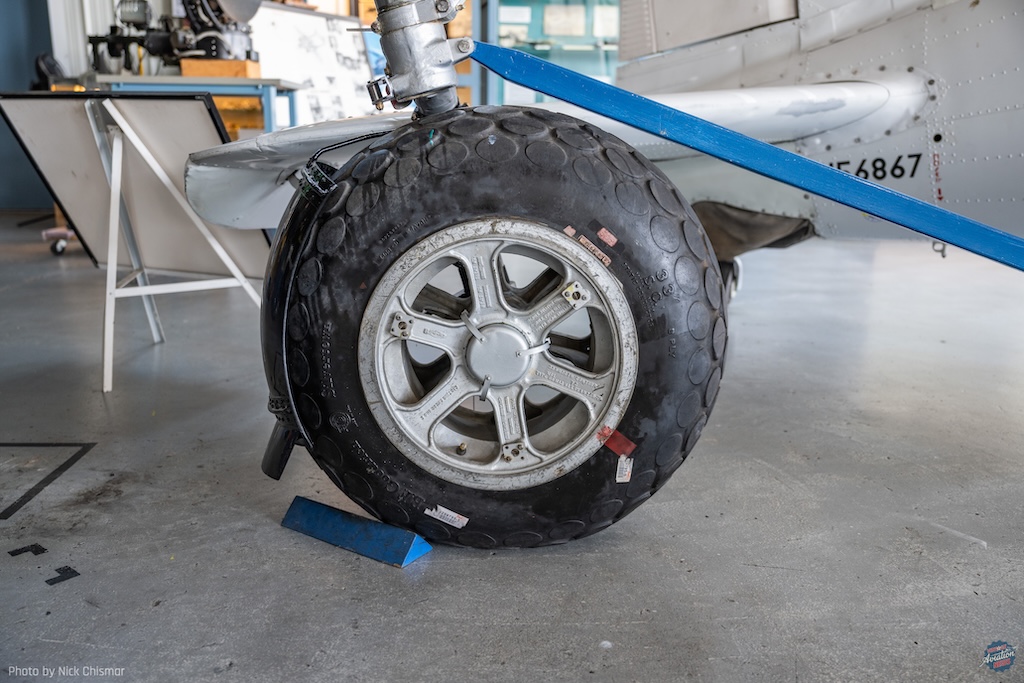
New Engines Ordered from Anderson Aeromotive
A major leap forward in the restoration effort involves power plants. Russ confirmed that the museum has ordered a pair of engines from Anderson Aeromotive in Grangeville, Idaho, at a cost of approximately $92,000 each. Though the engines will arrive without accessories, the museum has already acquired and overhauled all required components—including starters, generators, hydraulic pumps, and vacuum pumps—representing an additional $15,000 investment. “These engines may take a year or more to be delivered,” Russ noted, “but it’s another huge step toward getting this aircraft in the air.” You can support the museum HERE.
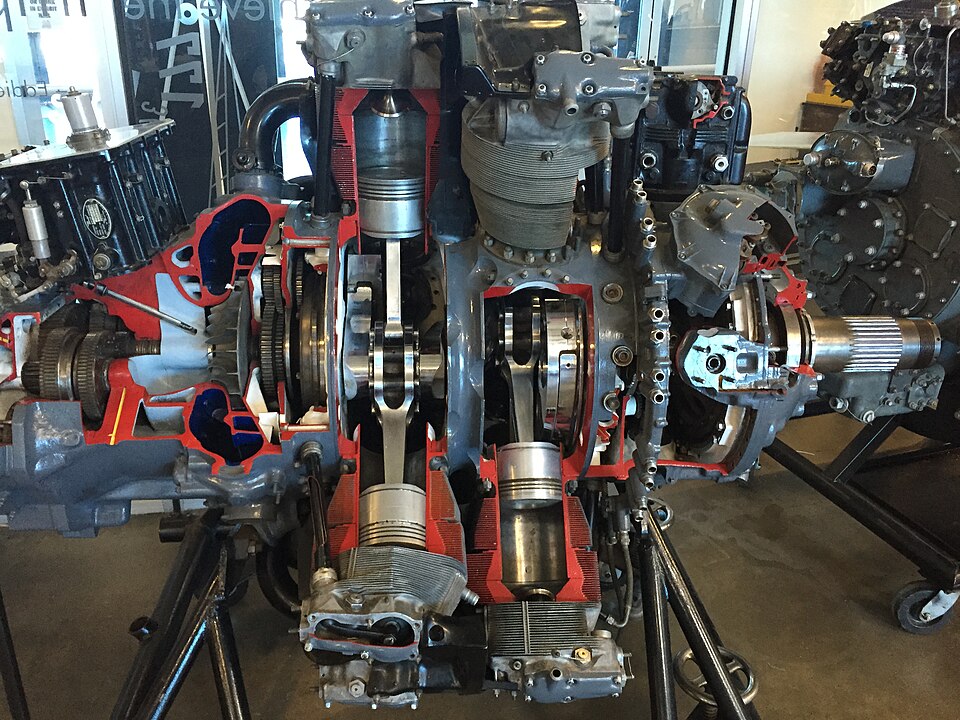
Interior Systems and Subassemblies
While much of the exterior now appears complete, work continues beneath the surface. Smaller panels and structural braces have been added around the aircraft, including new supports for the radar mount. Inside, the radar operator’s station appears nearly complete, while the pilot and gunner’s seats have been temporarily removed to allow better access to systems within the tight cockpit.
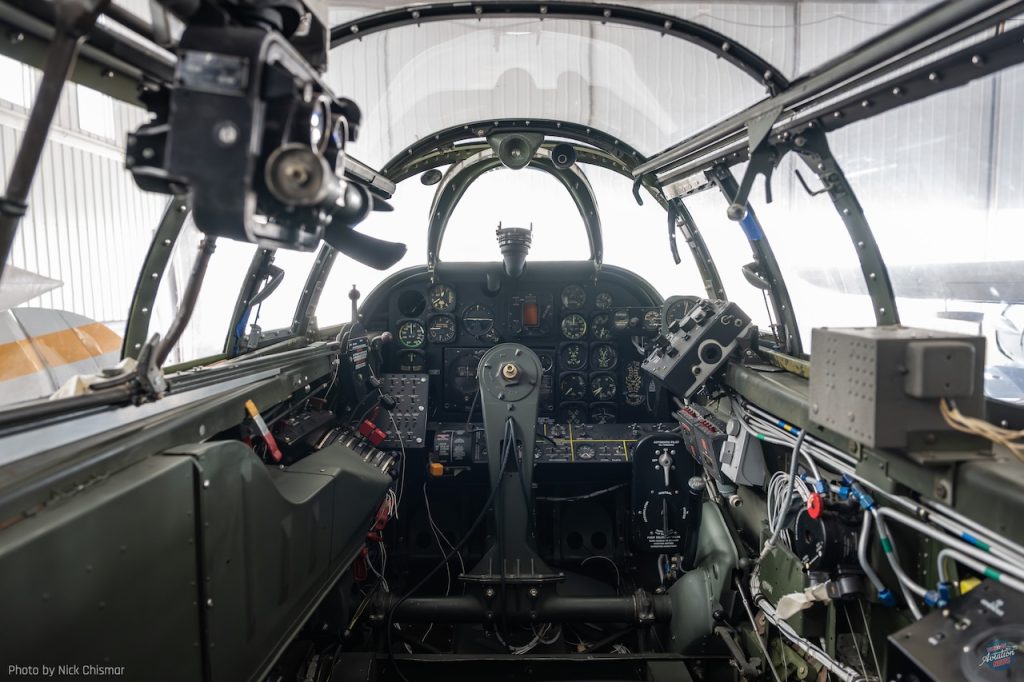
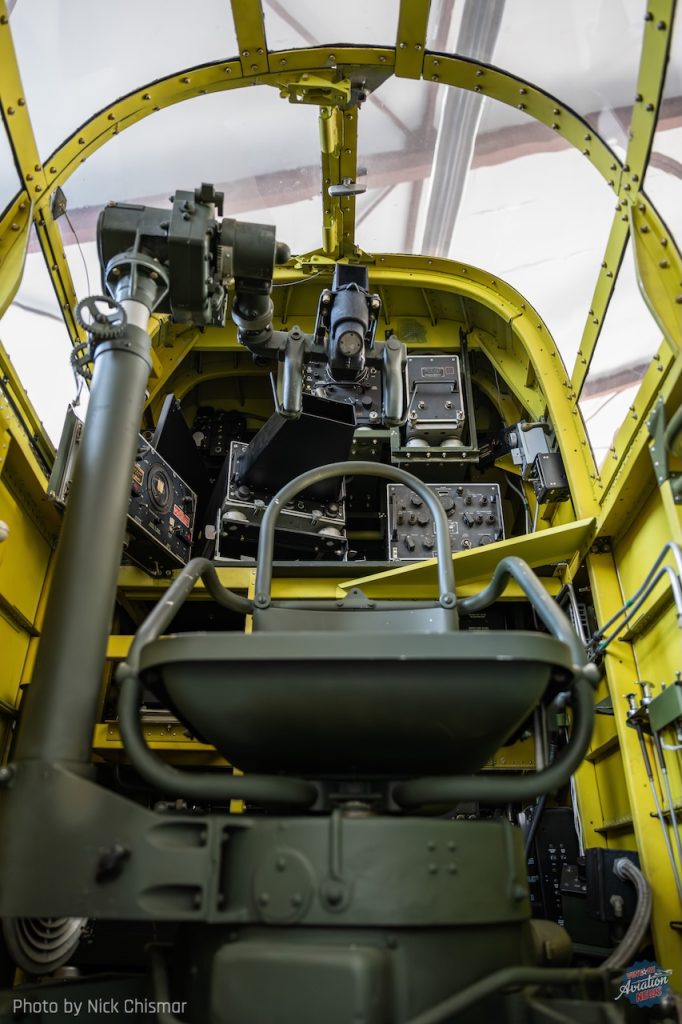
As with many restoration efforts at this stage, progress is no longer marked by dramatic visual changes but by the steady, intricate integration of systems and components essential for safe operation.
With each milestone, the Mid-Atlantic Air Museum’s P-61 Black Widow edges closer to flight—a historic moment that will mark the culmination of one of the most ambitious warbird restoration efforts ever undertaken. To learn more about the project or support its completion, visit the Mid-Atlantic Air Museum’s website. Special thanks to Russ Strine and the entire restoration team for their hospitality and dedication to preserving aviation history.
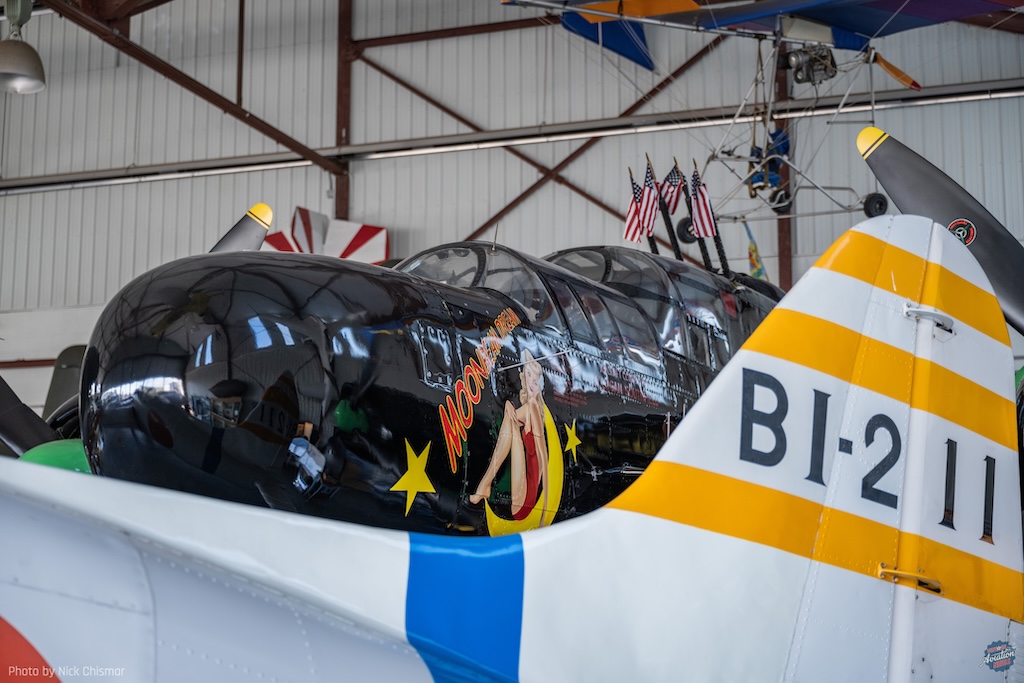
We would like to thank the Mid-Atlantic Air Museum for allowing Nick Chismar access to photograph the P-61 and machine shop, and a special thank you must go to Russ Strine for taking the time to sit down to discuss the restoration with Nick. To support the Mid-Atlantic Air Museum this restoration, click HERE.
